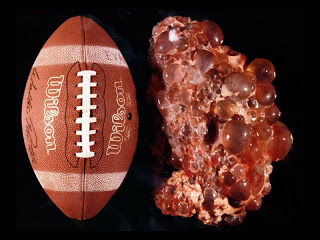 A couple of years ago, it was noted that mTOR inhibitors
A couple of years ago, it was noted that mTOR inhibitorsslowed the growth of cysts in animal models of Polycystic Kidney Disease. Although
the activity of mTOR is minimal in normal renal epithelial cells, in cyst
epithelial cells, expression is markedly increased. At the time, there was
understandably a lot of excitement about this and the potential for a role for
rapamycin for treating patients with PCKD. (We got in on this ourselves and had
two posts from Nate and Conall about this possible therapeutic pathway) Unfortunately,
the clinical studies were not very impressive and the excitement has since
faded somewhat. One of the reasons put forward for why it was ineffective was
that the doses were inadequate. The dose of rapamycin needed to suppress cyst
growth in mice was far higher than was tolerable for humans. Anyone who has
used rapamycin in transplant recipients knows about the side-effect profile
which prevents many people from taking the drug,
An article was just published in JASN which raises the
possibility that rapamycin could be used in higher doses than previously
thought possible. The folate receptor is selectively expressed on cancer cells
and renal epithelial cells. As a result, there has been some work done on
combining drugs with folate to increase the specificity of drug delivery,
particularly chemotherapeutic agents and thus limiting toxicity. The beauty of
this is that folic acid is taken up into most cells by an alternative pathway
and this pathway is not available to conjugated folate. In this study, the
authors conjugated rapamycin to folate and gave it to mice with PKD. They
showed that it was effective both at reducing expression of downstream targets
of mTOR and slowing cyst growth. This suggests that the combined compound could
be given in large doses to humans with PKD and offer targeted therapy with less
chance of significant extra-renal side effects.
possibility that rapamycin could be used in higher doses than previously
thought possible. The folate receptor is selectively expressed on cancer cells
and renal epithelial cells. As a result, there has been some work done on
combining drugs with folate to increase the specificity of drug delivery,
particularly chemotherapeutic agents and thus limiting toxicity. The beauty of
this is that folic acid is taken up into most cells by an alternative pathway
and this pathway is not available to conjugated folate. In this study, the
authors conjugated rapamycin to folate and gave it to mice with PKD. They
showed that it was effective both at reducing expression of downstream targets
of mTOR and slowing cyst growth. This suggests that the combined compound could
be given in large doses to humans with PKD and offer targeted therapy with less
chance of significant extra-renal side effects.
Photo from the University of Indiana website
